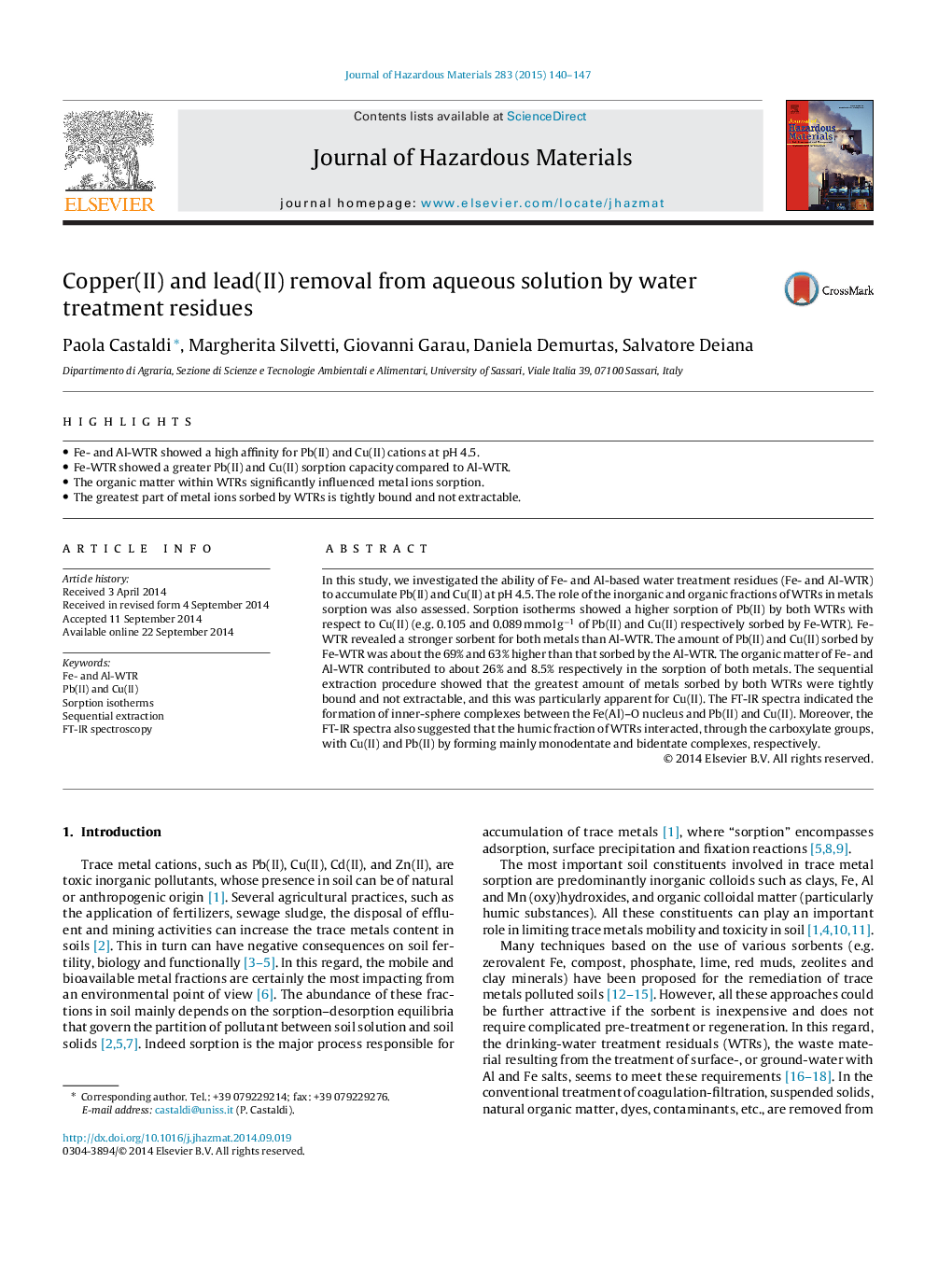| Article ID | Journal | Published Year | Pages | File Type |
|---|---|---|---|---|
| 576254 | Journal of Hazardous Materials | 2015 | 8 Pages |
Abstract
In this study, we investigated the ability of Fe- and Al-based water treatment residues (Fe- and Al-WTR) to accumulate Pb(II) and Cu(II) at pH 4.5. The role of the inorganic and organic fractions of WTRs in metals sorption was also assessed. Sorption isotherms showed a higher sorption of Pb(II) by both WTRs with respect to Cu(II) (e.g. 0.105 and 0.089 mmol gâ1 of Pb(II) and Cu(II) respectively sorbed by Fe-WTR). Fe-WTR revealed a stronger sorbent for both metals than Al-WTR. The amount of Pb(II) and Cu(II) sorbed by Fe-WTR was about the 69% and 63% higher than that sorbed by the Al-WTR. The organic matter of Fe- and Al-WTR contributed to about 26% and 8.5% respectively in the sorption of both metals. The sequential extraction procedure showed that the greatest amount of metals sorbed by both WTRs were tightly bound and not extractable, and this was particularly apparent for Cu(II). The FT-IR spectra indicated the formation of inner-sphere complexes between the Fe(Al)-O nucleus and Pb(II) and Cu(II). Moreover, the FT-IR spectra also suggested that the humic fraction of WTRs interacted, through the carboxylate groups, with Cu(II) and Pb(II) by forming mainly monodentate and bidentate complexes, respectively.
Related Topics
Physical Sciences and Engineering
Chemical Engineering
Chemical Health and Safety
Authors
Paola Castaldi, Margherita Silvetti, Giovanni Garau, Daniela Demurtas, Salvatore Deiana,
